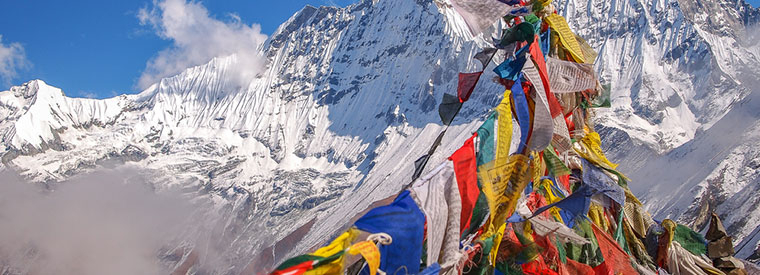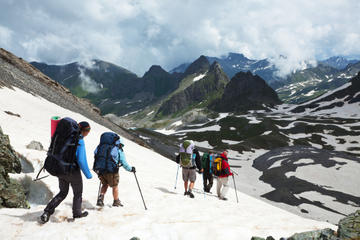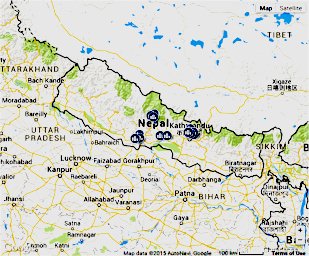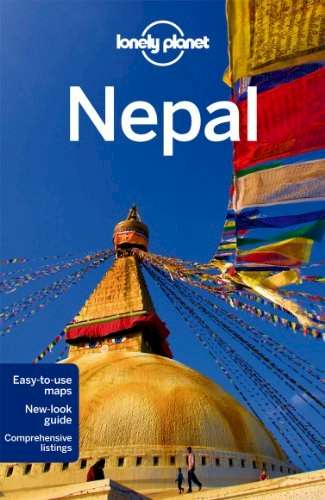« NEPAL • Discover Nepal
Discover magical Nepal

Draped along the spine of the Himalayas, Nepal is a land of sublime scenery, time-worn temples, and some of the best hiking trails on earth. It's a poor country, but it is rich in scenic splendor and cultural treasures. The kingdom has long exerted a pull on the Western imagination.
A | B | C | D | E | F | G | H | I | J | K | L | M | N | O | P | Q | R | S | T | U | V | W | X | Y | Z
» Asan Tole Market

The Asan Tole Market, also known as Ason Tole or Asan Bazaar, has always been one of Kathmandu’s most strategically well-placed marketplaces. In ancient times, famous trade routes converged here and merchants traveling from India to Tibet would stop at the bazaar for rest and trading. Today, it is produce that is carried from all over the valley to the bazaar. In accordance with the square’s importance of food, the temple of Annapurna Ajima, the goddess of prosperity and abundance presides over the neighborhood …
» Bagmati River
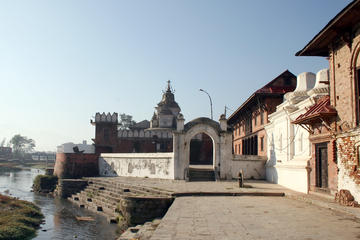
At first glance, the Bagmati River might appear to be just an ordinary river, meandering its way through the Kathmandu Valley in Nepal. However, the Bagmati holds a great deal of religious significance to Hindus and Buddhists in the country, making it a destination for Nepali and visitors alike. From the temples lining its banks to the funereal ceremonies that take place in its waters, the Bagmati has been mentioned as a holy place for more than 2000 years and is considered the source of Nepalese civilization …
» Bhaktapur
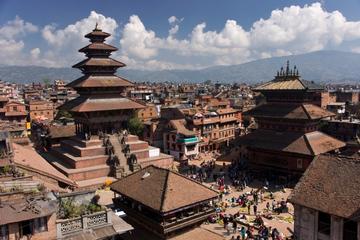
Bhaktapur is the third largest city in Nepal, and along with Kathmandu and Patan, makes up the three holy cities in the Kathmandu Valley. The city was founded during the 12th century AD by King Anand Dev Malla and remains well-preserved and free of motor traffic to this day, giving it a sense of timelessness and peace in bustling Kathmandu. Its distance from Kathmandu, about seven-and-a-half miles (12 kilometers) east, and the small entrance fee to enter the city tends to keep the crowds away from this UNESCO World Heritage Site …
» Boudhanath Stupa (Bodhnath Stupa)

Experts disagree on just how old Bodhnath Stupa is, but this site of Buddhist worship is undeniably one of the largest stupas in the world and the most popular site in Nepal. The oldest structure likely dates back to the fifth century AD, and local legend tells of a woman who tricked the king at the time into giving her a large plot of land to build a shrine to the Buddha. It’s unclear whether the Bodhnath Stupa houses a holy Buddhist relic as most such stupas do, but locals will tell you it has a small piece of bone that the Buddha once carried …
» Budhanilkantha
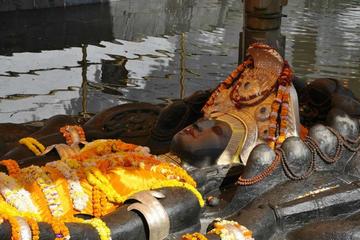
The five-meter-long and thus biggest stone statue in Nepal, Budhanilkantha, portrays a sleeping Vishnu, floating like a gigantic astronaut on a bed of snakes in the middle of a big pool of water depicting the cosmic ocean. The incredibly well preserved carving is made out of black stone and is thought to be 1500 years old. Located in the village of the same name, the holy site is a popular spot for Hindus to practice puja, a prayer ritual to worship the gods. The daily ceremony entails priests – they are the only ones allowed to approach Vishnu’s divine head …
» Changu Narayan
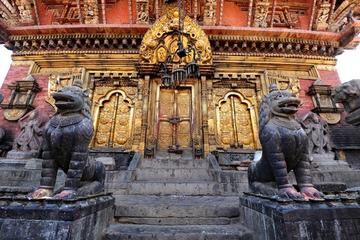
Changu Narayan Temple, located within easy reach of the town of Bhaktapur in the Kathmandu Valley, has a history as a sacred site dating all the way back to the third century AD, though the double roofed temple that stands in honor of the god Vishnu today was erected after a fire in 1702. Some of the statuary contained within the temple date back to the fourth through ninth centuries. The ancient temple honors Vishnu as Narayana, or the First Being. The wooden roof supports that are visible on the temple’s exterior depict several other deities …
» Chisapani

Chisapani, often also called Chisopani, is located at 2,200 meters right at the edge of Shivapuri National Park and hikers often use the small village as a rest spot on their long hikes when crossing the park from either Budhanilkantha or Sundarijal. To be honest, the little village itself doesn’t have much to offer and has often been described as basically not much more than an insignificant truck stop on a hilltop. It is true that apart from a few less than pretty concrete houses and hotels, there isn’t much else, …
» Chitwan National Park

Chitwan National Park is situated in a plain at the foot of the Himalayas, right on the border to India. The area in which the park is located is called Terai and has not only the highest precipitation levels, but is also the warmest and most forested part of Nepal. Once, Terai was sparsely populated, hard to reach and dominated by thick forests, swamps and swarms of mosquitoes. Wild animals lived here and the malaria risk was omnipresent. Still, it was the favorite hunting ground for Nepal’s wealthy as well as monarchs from abroad …
» Chobhar Village

Chobhar Village is an ancient hill village located about 8 kilometers outside of Kathmandu. The streets are rubble filled, with chickens pecking for seeds, dogs sleeping on front steps, laundry hung out to dry in front of windows and shingled roofs that have become dented after years of being exposed to the elements. Everywhere, bundles of corn are hung up to dry in the sun. But the old Newari settlement isn’t only well known for being a picturesque village with quiet streets and spectacular views over Kathmandu Valley …
» Dudh Kosi River
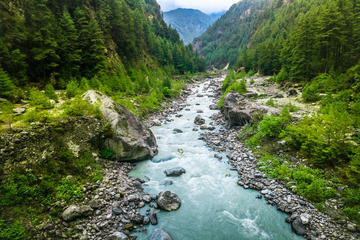
The Dudh Kosi River is the Nepalese section of the Kosi River system, which has it's origins on the southern slopes of the mighty Mount Everest. Eventually, the Dudh Kosi River drains into the major Kosi River, one of the most powerful waterways in the area. The Kosi River, as a system, flows some 720 kilometers and carries an average of around 2100 cubic meters of water per second. Of course, the flow of the river isn't consistent and during the spring melt of the Everest glacial mass, the river is prone to devastating floods …
» Durbar Square
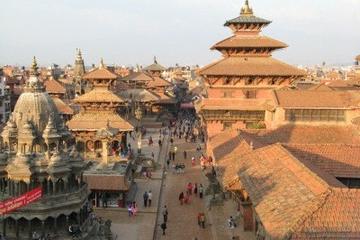
Kathmandu’s Durbar Square, one of the most popular UNESCO World Heritage sites in the Nepalese capital, was once the location where kings were crowned, and today remains the heart of the city. The square dates back to the 11th century, when the Hanuman Dhoka Palace was constructed, and remained the abode of the Nepalese monarchy until the 19th century. The temples and palaces that still surround the bustling Durbar Square demonstrate the intricacy of Newar architecture, characterized by carved wooden windows …
» Freak Street (Jhhonchen Tole)

If you were to go back in time and walk down Freak Street (Jhhonchen Tole or Jochen Tole) in the early 1970s, you’d find yourself surrounded by cheap hostels, New Age enlightenment shops, cafes and hordes of the hippies who gave the stretch of road its nickname. While the flower children have moved on since Freak Street’s heyday, the area remains a popular alternative to Thamel for dining and accommodation. If you find yourself near Kathmandu’s Durbar Square, take the short walk to Freak Street for lunch or dinner …
» The Himalayas and Mt Everest
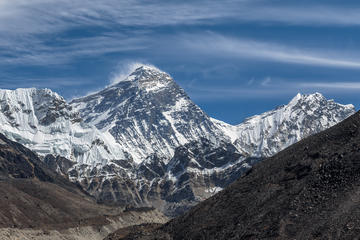
Some people come to Nepal for the culture, others to learn about the local Buddhist religion, but the Himalayan country’s dramatic natural landscape is the biggest draw of all. Mt Everest, the world’s tallest peak and the crowning jewel on many a peak-bagger’s bucket list, rises 29,029 feet (8,848 meters) above sea level. Even if you aren’t planning to shell out the tens of thousands of dollars it costs to climb the peak, you’ll still find jaw-dropping scenery in spades. From Kathmandu, it’s possible to trek into the Himalayas for a day to multiple weeks …
» Kirtipur Village
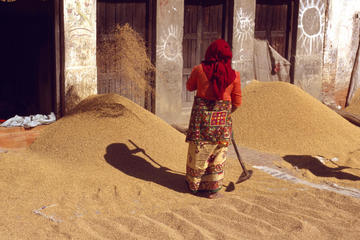
Kirtipur is one of several, painstakingly restored Newari villages in the Kathmandu Valley. Located on a 1,400-meter high crest of a small hill chain, the city offers beautiful views: to the north you can see the urban sprawl of Kathmandu with the Himalayas rising up behind and to the south, the sparsely populated hill country spreads to the horizon. Despite its proximity to the capital, Kirtipur gets only very few visitors, but on the other hand, it would be wrong to describe the village as “sleepy” …
» Lukla

Lukla is maybe best known for having the dubious honor of being the town with the world’s most dangerous airport, the Tenzing-Hillary Airport. Not only are there no radar devices, but the airstrip is on a slope as well as flanked by both a 3,000-meter drop into the valley on one side and a steep cliff on the other. Each safe landing is a heroic feat by the pilot – if it can be achieved at all that is, since weather conditions regularly shut down the airport for days. Nonetheless, for travellers heading into Sagarmatha National Park …
Page 1 • Page 2
« NEPAL • Discover Nepal


